The Coastwise Packet Co. sign hangs over the side of Bob Douglas’s workshop in Vineyard Haven. The building is weathered and salty, much like the 83-year-old man himself. But 52 years later it has stood the test of time, continuing to offer the unflappable Mr. Douglas refuge year round. “This is my inner sanctum,” said the founder, builder and owner of The Black Dog Tavern and the wooden schooners Shenandoah and Alabama on a recent summer day. In front of his shop, steps from the harbor, hungry patrons gather outside the Black Dog restaurant awaiting their turn to dine at the iconic Island establishment. The tavern is one of just two restaurants on the Vineyard Haven waterfront. Not far away, the Blue Canoe Waterfront Grill is also a popular eatery with pleasant views of the harbor.
Day sailors disembark the Alabama and shuffle down the Black Dog Wharf, toting children and their toys. Toddlers play on the sandy beach below and wade in the surf. Colored umbrellas offer respite from the sun.
To the west, where Water street dead-ends, the Steamship Authority is a congested hub. Passenger vehicles and flatbed trucks wind around a crowded parking lot. Ferries shuttle in and out all day, shepherding moving and storage vehicles, kitchen and food suppliers, vacationers and their cars to and from Martha’s Vineyard’s main port of entry. As parked cars wait for a ride back to the mainland, SSA vessels glide through a harbor filled with boats of every description — sloops, yawls and schooners, motor yachts large and small.
From Owen Park to the Lagoon Pond drawbridge, decades old, family-run businesses pepper the Vineyard Haven waterfront. Among them are the Black Dog Tavern and the Black Dog Tall Ships, wooden boat builders Gannon and Benjamin, the Vineyard Haven Marina, the Martha’s Vineyard Shipyard, and R.M. Packer Company, a fuel supplier and marine barge operation. “There are businesses that are tremendously valuable and Packer’s is one of them because they are the landing place for many of the supplies that builders need, like gasoline, petroleum, rocks, half-built houses,” observed Tisbury selectman Melinda Loberg. “No other harbor is equipped for them to come, so it is pretty important that we maintain that footprint and not price it out of the market,” she said.
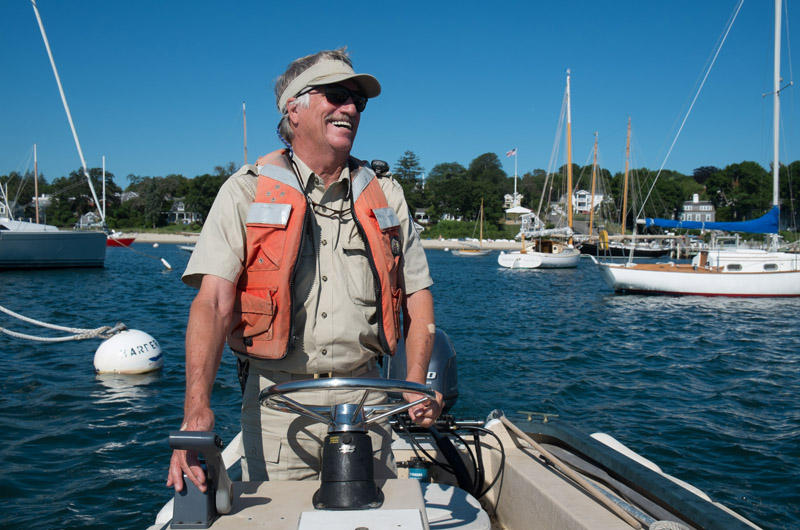
At Gannon and Benjamin, whose wooden boat building business is yet another piece of this eclectic working waterfront, a young boy puts the finishing touches on a small boat he built with his father, drilling wood planks across the boat’s width for seating.
Inland businesses support the varied uses of the harbor. Sailors who moor in Vineyard Haven have access, by foot, to the Stop & Shop grocery store and marine hardware stores where they buy provisions for their galleys and tools to service their boats.
The waterfront architecture is haphazard, but that is perhaps Vineyard Haven’s charm — not quaint, per se, but certainly unique, plus it’s rare for any town today to look much the same as it did 50 years ago. “It is a total free-for-all in its style and demeanor,” said Nat Benjamin, who with his partner Ross Gannon owns and operates the boat yard just off Five Corners, where traffic jams reach epic proportions on busy summer days. He continued: “But it is real, and it’s not unaffordable. Nantucket is so over the top quaint and if you have $15,000 a month you can rent an ice cream cubicle on the pier.”
In 1994 the town went through a visioning process, the result of which was a land use study and a set of regulations that control development and commercial activity along the waterfront. The waterfront/commercial district zoning bylaws read in part: “The purpose of this district is to manage the character, function and integrity of Vineyard Haven’s waterfront by: maintaining and enhancing the existing marine character and water dependent uses of the area.” Commercial fishing and fish processing facilities, boat yards and fuel docks are among the businesses permitted along the waterfront. Another set of regulations accompanies a 1999 district of critical planning concern (DCPC) designation by the Martha’s Vineyard Commission, overseen by the town board of selectmen.
Vineyard Harbor Motel is the lone motel on the harbor side of Beach Road. Historic businesses have effectively been protected from being squeezed out by more profitable commercial uses for the waterfront such as restaurants, high-rise hotels and more. “We aren’t a cash register like Oak Bluffs and Edgartown — they really cash in on their summer traffic,” said harbor master Jay Wilbur. “Our harbor is taken up by actual businesses that work and employ people year round, so the economic benefit comes to the town through its residents’ salaries and taxes.”
But like much of the Island, Vineyard Haven is in the throes of change. As a generational shift gradually takes place, old values have begun to yield to new thinking and ideas.
Though there is a consensus among townspeople that the waterfront should be preserved and remain largely the domain of water-dependent and water-enhanced businesses, a growing contingent of people believe that the current regulations are too stringent and merit review, perhaps with a more open, creative eye.
More varied waterfront activity would contribute to the town’s overall vibrancy and resiliency, insists Phil Hale, owner of the Martha’s Vineyard Shipyard, which has been family owned since 1961. “There are waterfront properties on Lagoon Pond where the water is so shallow that there isn’t much one can do in terms of marine use,” said Mr. Hale, whose oldest son James will eventually take over the business. “Areas like that could be allowed to have art galleries or restaurants,” he said.
Morgan Douglas, son of Bob Douglas who runs the Black Dog Tall Ships, calls the waterfront’s scant development a detriment to the town. “How can you afford to finance and build out a business plan here when you are restricted to a certain type of business and we are on Martha’s Vineyard where you are operating in a high season that lasts eight to ten weeks?” he said. “Should I open a rope chandlery or something? Good luck!”
Vineyard Haven, alternatively known as Tisbury and formerly Holmes Hole, was once one of the largest, most active ports in America. For ships sailing to Europe, Vineyard Haven was the last stop on the map before crossing the Atlantic Ocean and was busy with hundreds of vessels in the mid 1800s. It was also the first landfall port on the return to the United States. Inns, brothels and bars lined the streets all the way up to Grove avenue on West Chop. Five Corners, where Beach Road, Water Street, Beach Street and Lagoon Pond Road meet, was formerly trafficked by boats rather than bicyclists, vehicles, and pedestrians.
The Beach Road area has recently come under increased scrutiny, both for reasons of aesthetics and safety. The state Department of Transportation has directed funds for an enhancement project through its Transportation Improvement Program for 2017. A plan is currently being developed — and debated. Priorities include extending a bike path so that it runs through town and connects to the Vineyard Haven-Edgartown Road bike lane, along with eliminating utility poles from the center of sidewalks to encourage foot traffic. These improvements, some believe, would encourage area businesses to upgrade themselves independently.
In addition to its working waterfront, Vineyard Haven is home to a collection of year-round cultural organizations, including the Martha’s Vineyard Film Center, the Vineyard Playhouse and the Martha’s Vineyard Hebrew Center. An array of artists and designers contribute to a thriving arts community that is unique to Vineyard Haven and recently earned the town a special state designation as a Cultural District, the first such designation on the Vineyard.
If its port and cultural district define Vineyard Haven, so does the tight knit year-round community. Some of its members are the same ones who rallied to help rebuild Gannon and Benjamin after it was destroyed by fire in the middle of the night in October 1989. “We thought they would be happy that it burned down so they could get rid of us,” Mr. Benjamin recalled wryly. Instead, James Taylor and his siblings put on a benefit concert, the Black Dog hosted a fundraising dinner and others contributed labor and building materials.
And so Gannon and Benjamin is still there, as are its founders, who toil away building and maintaining boats, and gather daily to break for lunch on the beach in front of its main building, where a makeshift outdoor living room accommodates the whole crew. They sit, toes in the sand, and talk about sailing mostly. As entwined as they are in the contemporary fabric of the community, in moments like these, they feel far removed from this era, and the rest of the town. Forty-three years after opening shop, Ross Gannon still scrapes boat bottoms himself.
He reflected: “When it’s your own, it’s a labor of love.”

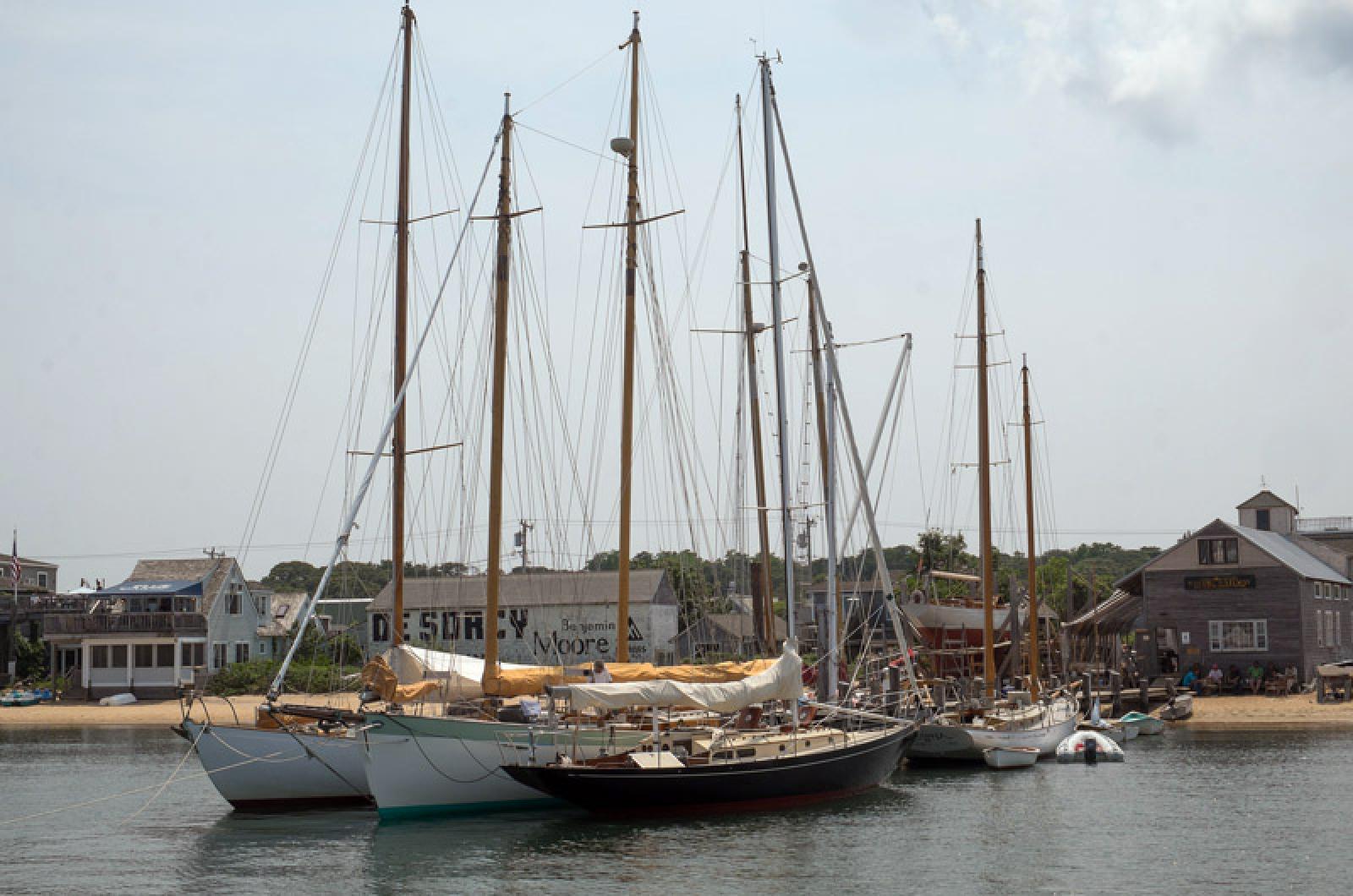

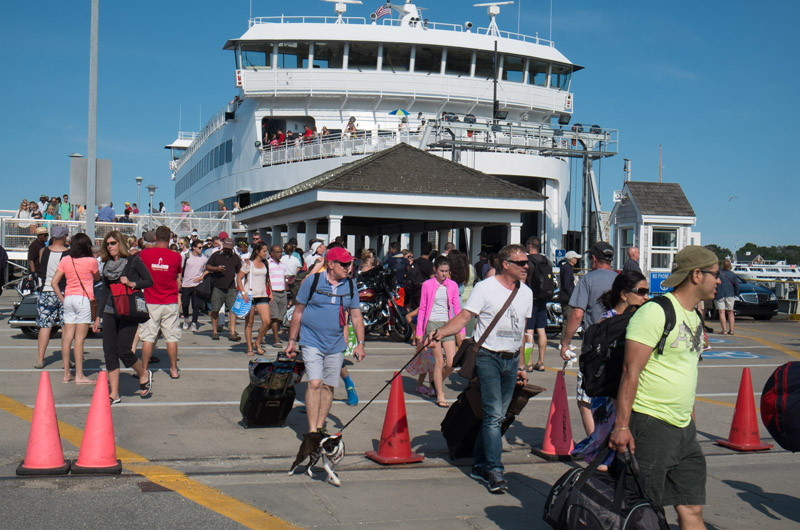

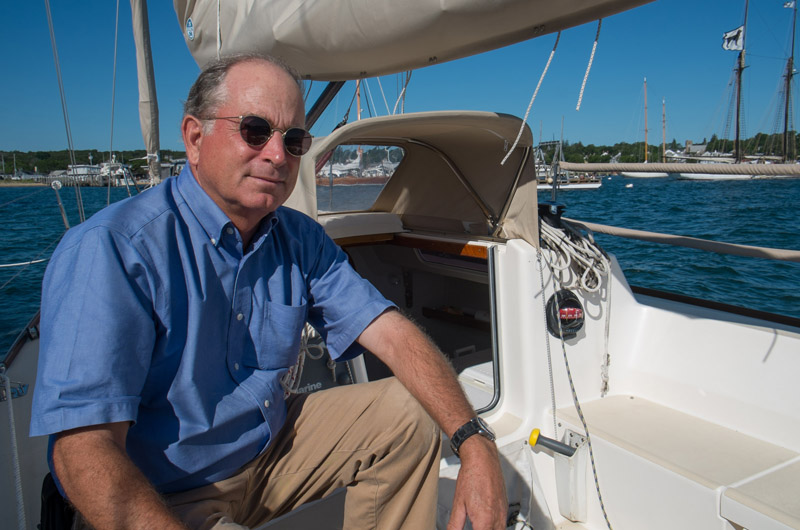
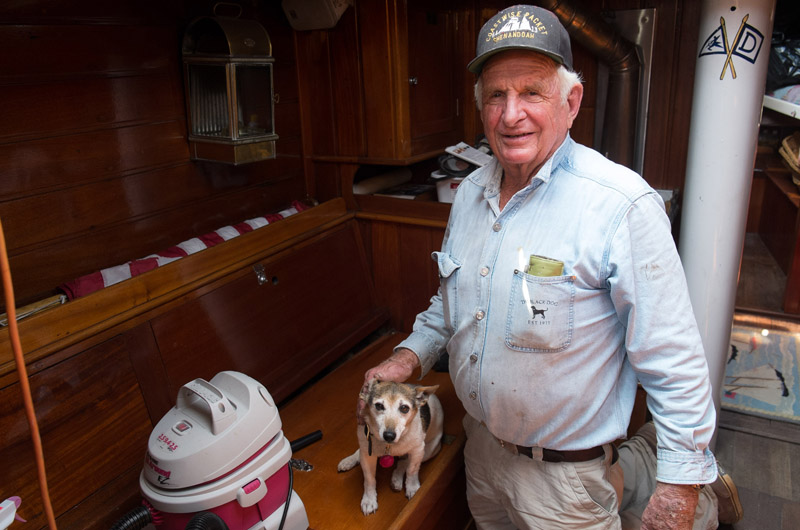





Comments (14)
Comments
Comment policy »